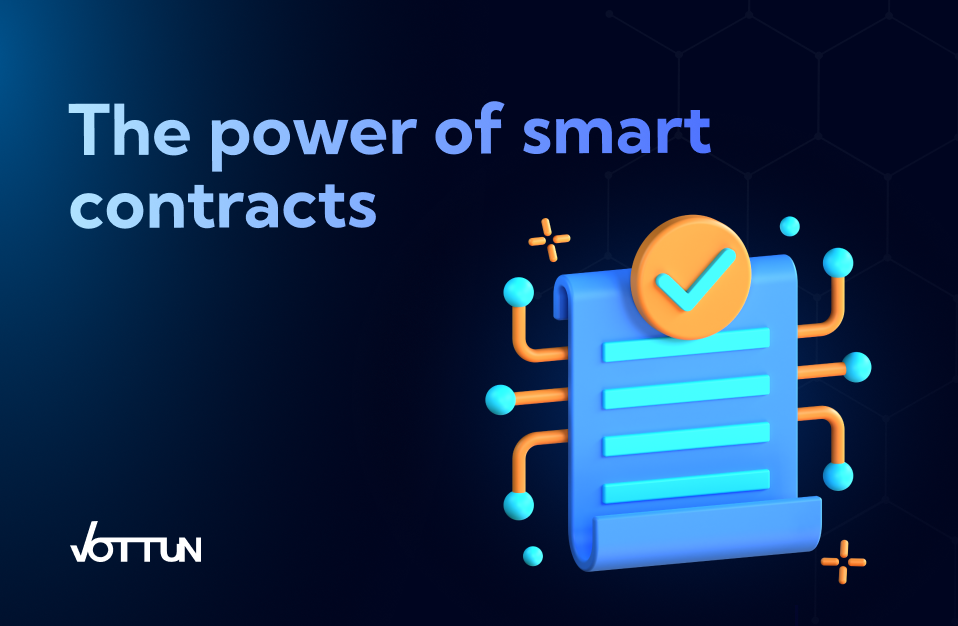The power of smart contracts
Smart contracts represent an innovative way to facilitate digital exchanges, these are computer programs with results and predefined conditions in their code. The actions are automatically executed when the previously established conditions are met.

These digital contracts are not limited to a specific area and can be used to exchange money, properties, shares, or any other valuable asset in a transparent and secure manner. The absence of intermediaries and the automatic execution of clauses help to avoid conflicts, simplifying the transaction process.
In addition, smart contracts allow P2P agreements automatically, offering an efficient and decentralized alternative. By dispensing with third parties in the execution of agreements, autonomy and security in transactions are promoted.
Key properties of smart contracts
Smart contracts offer significant advantages in online transactions. The most important features to highlight:
1. Smart contracts are “permisionless”: no one needs to ask for permission to create, publish or use a smart contract. Anyone can write one and also use it.
In order to draw up and publish a smart contract, it is necessary to learn how to schedule it and pay the corresponding gas fee from the blockchain where it is intended to be published. When its use only needs to have an internet connection and the blockchain-linked cryptocurrency to pay the gas fee. In compliance with these requirements, no obstacle or entity will be able to prevent the implementation of the smart contract in blockchain.
2. They are immutable: once they are implemented in blockchain they can never be changed.
This brings us two great advantages:
- It ensures that the conditions of this agreement cannot be modified by anyone.
- Being an immutable piece of code will always be fulfilled what is indicated here, eliminating subjectivities and misunderstandings.
This allows us to have trustworthy, transparent programmes that are not controlled by anyone.
Limitations
One of the main limitations of smart contracts is that they cannot interact autonomously with real-world information; their scope is limited to the information contained within the blockchain.
Another challenge we find is their size, as they are restricted to a maximum of 24 KB in their code lines.
But where do these smart contracts get? Basically, a smart contract is like a software program that is stored, executed and verified within a blockchain. However, not all blockchains are suitable for programming, and they must have the necessary capacity to accommodate them.
These blockchains with the ability to program smart contracts are known as smart contract platforms. Ethereum is the first and most recognized of all, followed by others such as Solana, Binance Smart Chain, among many others. All programs must be written in a specific programming language.
When various smart contracts are combined to create more complex programs, they are transformed into decentralized applications, known as Dapps.
DAPPs
A decentralized application, or Dapp, is essentially a set of smart contracts that are grouped together to form a more complex application. This multifunctional application is presented with a web interface, allowing any user to use it without the need for programming skills.
Properties of decentralized applications
Decentralized applications have various properties and advantages derived from smart contract technology. Like these, they are “permisionless” and immutable. In addition, Dapps exhibit other outstanding features:
Decentralization: The code of a Dapp is decentralized, as it is saved and executed through the nodes present in the blockchain. This property ensures the autonomy and equitable distribution of the operation of the application.
Determinism: Following the line of smart contracts, a decentralized application will always execute the same function for which it was programmed; its code is deterministic.
These properties consolidate decentralized applications as innovative tools, offering a decentralized and predictable approach in the execution of functions, while encouraging reuse for greater versatility.
Disadvantages of Decentralized Applications
Despite having the title of decentralized applications, these do not always fully comply with this premise. In some cases, these applications depend on centralized elements that reduce their degree of decentralization.
Another challenge is to use a Dapp for the first time. For a new user, the process can be confusing and complicated, as it involves the use of a digital wallet, transactions with cryptocurrencies, security precautions, among other aspects that may be difficult to understand initially.
In addition, decentralized applications are unalterable, which, although valuable for security, means that making modifications, improvements or corrections to errors in the application is impossible. As a solution to this drawback, the publication of new smart contracts is required when changes are to be implemented.
In order to reduce these risks, audits are carried out in which experts carefully examine smart contracts in search of possible vulnerabilities. This approach seeks to ensure an optimal level of safety and confidence in the functioning of Dapps.
In conclusion, smart contracts and decentralized applications are transforming digital transactions by automating agreements, eliminating intermediaries and providing transparency. Although they offer benefits as inmutability and decentralization, they face challenges, limitations in interaction with the real world and initial complexity for users.
Dapps, although innovative and reusable, present obstacles, such as discretionary permissions and difficulties for new users in cryptocurrencies. Audits are essential to ensure safety and confidence in these technologies, balancing innovation with risk protection. In this new digital paradigm, the optimization of efficiency and trust is fundamental.
